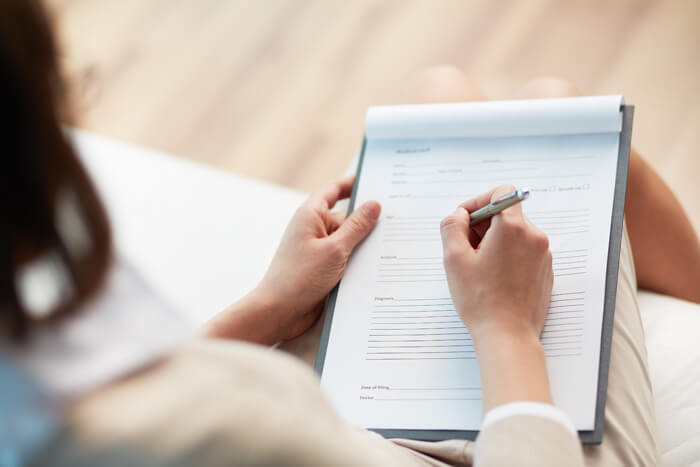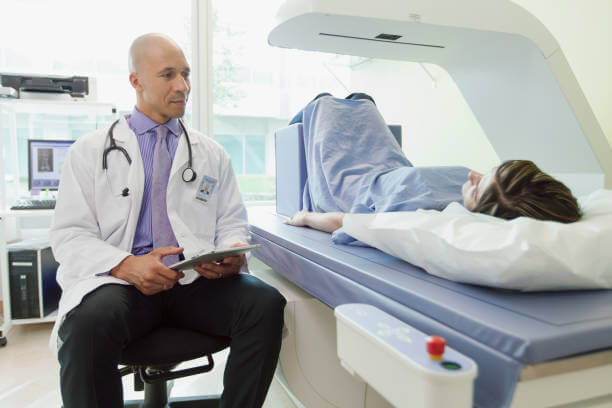Do you have an upcoming bone density scan? If so, you may be nervous or unsure of what it will be like. Here’s what you should know about this procedure.
Jump Ahead:
What to Expect During a Bone Density Scan
 Bone density scans are quick and painless procedures that usually take about 10 to 30 minutes to complete. The exam is generally conducted on the bones that are more prone to breakage because of osteoporosis, such as your spine, femur or the bones in your forearm.
Bone density scans are quick and painless procedures that usually take about 10 to 30 minutes to complete. The exam is generally conducted on the bones that are more prone to breakage because of osteoporosis, such as your spine, femur or the bones in your forearm.
When you come for your bone density scan, one of our team members at Clear Connect Medical Imaging will position you on a padded table so the bone being scanned is accessible. The test is conducted using a dual-energy X-ray absorptiometry (DXA, DEXA) machine. It slowly passes over you, sending a low dose X-ray through your bone. The image generates on a computer monitor.
When the scan is in progress, you’ll be asked to hold as still as possible and may need to hold your breath. This ensures your image does not become blurred. Radiation exposure during the procedure is minimal and less than what’s emitted by a chest X-ray.
Uses Of A Bone Density Scans
 Before the use of bone density scans, the only way to tell if you had osteoporosis would be if you broke a bone. By this point, however, your bones would already be in a bad state, weakened by the disease. Older women are the most common demographic for this condition. However, anyone can develop osteoporosis no matter their age or sex.
Before the use of bone density scans, the only way to tell if you had osteoporosis would be if you broke a bone. By this point, however, your bones would already be in a bad state, weakened by the disease. Older women are the most common demographic for this condition. However, anyone can develop osteoporosis no matter their age or sex.
Your doctor may recommend a bone density scan if you present with some of the following risk factors:
- Reduced height of at least an inch and a half
- Fragile bones that are more prone to fractures
- If you take certain medications that interfere with your bone’s rebuilding process, such as steroids
- Transplant patients who are taking anti-rejection medication
- Sex hormone levels that have dropped
Bone density scans have several uses, including:
- Checking to see if your bone density has decreased
- Determining if you are at high risk of fracturing your bones
- Confirming an osteoporosis diagnosis
- Monitoring the progression of osteoporosis
- Reviewing the effectiveness of osteoporosis treatments
Visit a Clear Connect Medical Imaging Location
If your physician thinks you are at risk of osteoporosis, then it’s time to schedule a bone density scan at a Clear Connect Medical Imaging center. We’re committed to providing high-quality imaging services to the communities where we serve. Find a location near you to schedule your bone density test.
Find A Location Near You





